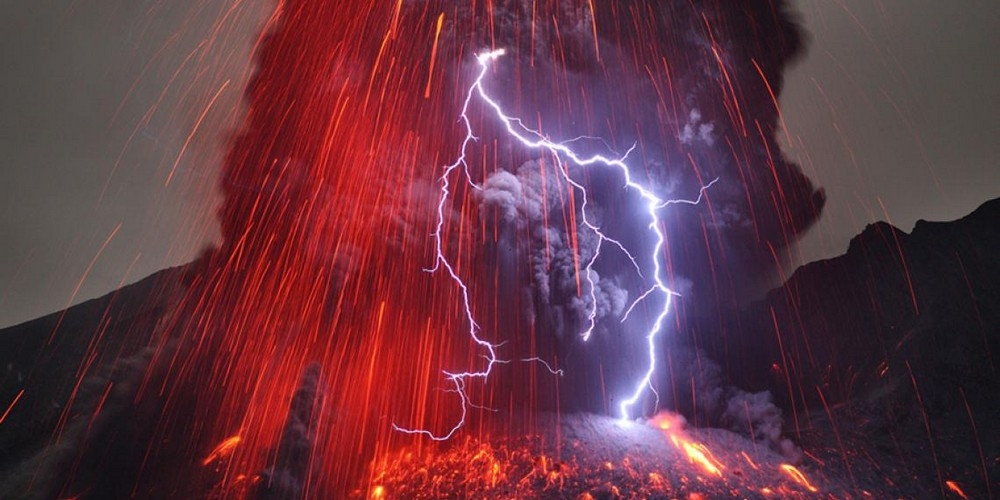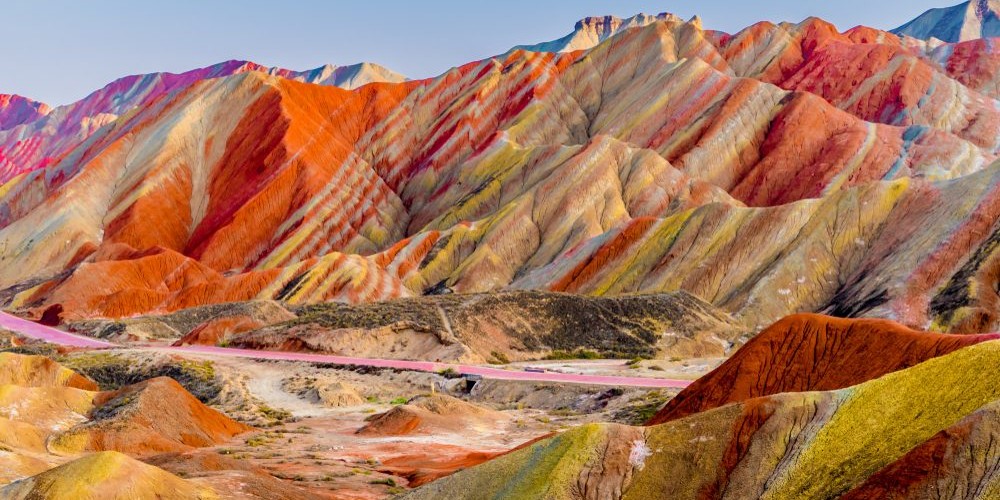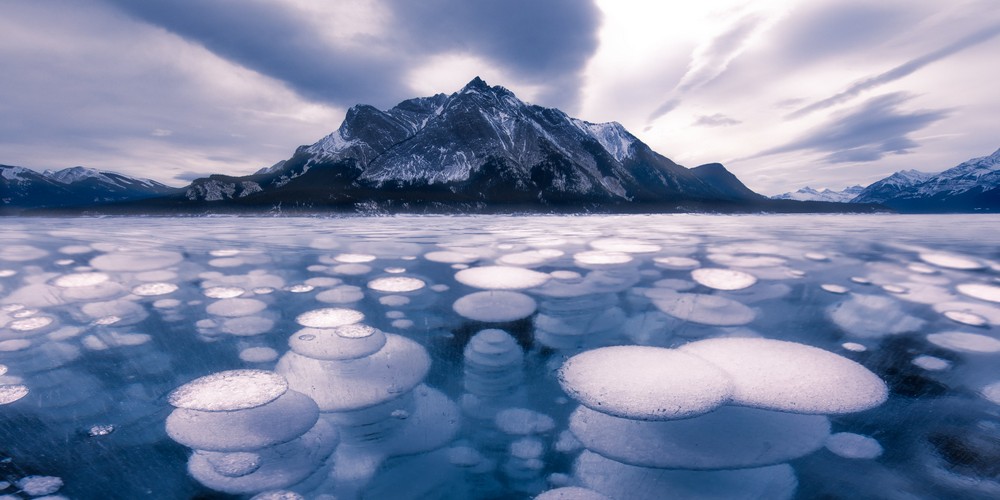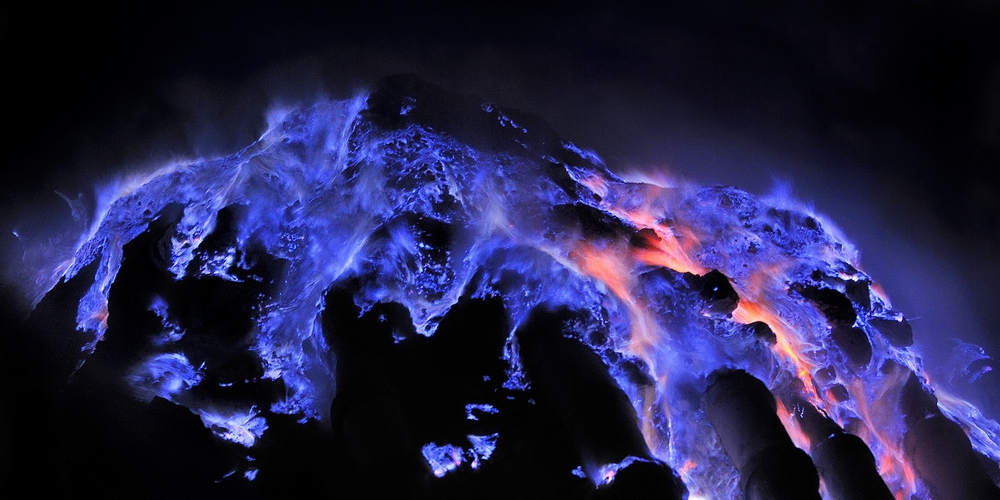Rainbow Mountains, Zhangye Danxia National Geopark, China
Zhangye Danxia National Geological Park is in the eastern foothills of the Qilian Mountains in Gansu Province, China. The geological park has a spectacular Danxia (/dan-sshyaa/’red cloud’) landform that covers about 50 square kilometers (19 square miles). The Danxia landforms are a masterpiece of nature.
The colorful landscapes of Rainbow Mountains were created by sandstone and minerals being layered atop each other over the years, with the tectonic plates shifting, creating angled painted layers across the rock formation and rolling sandstone hills.
Frozen Methane Bubbles, Canada
While the below-freezing temperatures and icy wind gusts may humble even the most experienced traveler, the payoff is well worth it. Visitors will be greeted with stunning views of mountain peaks that rival Banff and Jasper national parks just a stone’s throw away – plus a mysterious natural phenomenon lurking in the lake.
Trapped methane causes frozen bubbles to form under the ice on the lake’s surface. This phenomenon results when decaying plants on the lake bed release methane gas, which creates bubbles trapped within the ice, in suspended animation, just below the surface as the lake begin to freeze.
Blue Fire Volcano, Kawah Ijen, Indonesia
The most famous of these fires occur regularly on Indonesia’s Kawah Ijen volcano, on the island of Java (the 13th largest island in the world), which has some of the highest levels of sulfur in the world and is also the site of sulfur mining. Due to the flames, Kawah Ijen has also been nicknamed “the Blue Volcano.”
The flowing electric blue color arises from the combustion of sulfur-rich gases. Hot, pressurized gases push through cracks in the volcano wall, burning as they come into contact with air. As they burn, sulfur condenses into a liquid, which flows downward. It’s still burning, so it looks like blue lava.



